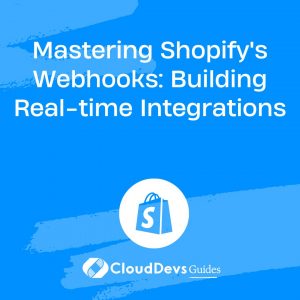Skyrocket Your Sales: Enhancing Your Shopify Store Using Advanced Techniques
Running a successful online store is about more than just having excellent products. It requires an accessible, efficient, and engaging platform where your customers can find and buy what they’re looking for. Shopify is an incredible eCommerce platform that offers a variety of ways to customize your online store. However, if you find that it’s a daunting task to optimize your store, you can choose to hire Shopify developers to do it for you. In this article, we’ll discuss advanced Shopify development techniques, which skilled Shopify developers utilize, to optimize your store for a more personalized and streamlined customer experience.
1. Shopify Apps and Integrations
Leveraging the power of third-party apps and integrations is a great way to add advanced functionalities to your Shopify store without having to write all the code yourself. These apps can do everything from managing your inventory to streamlining your shipping process, and even improving your store’s SEO.
Example: SEO Manager
SEO Manager is a powerful app for optimizing your Shopify store’s SEO. It helps you to identify and fix SEO issues, allows you to edit your robots.txt file and sitemap, and provides keyword suggestions for your content.
Example: Klaviyo
Klaviyo is an excellent tool for email marketing. It integrates seamlessly with your Shopify store and can collect customer data, segment your email list, and even automate your email campaigns. This saves you time while ensuring your customers always receive relevant and personalized content.
2. Custom Theme Development
Custom themes can set your Shopify store apart from your competitors and give your brand a unique look and feel. This does require some knowledge of Liquid – Shopify’s template language, HTML, CSS, and JavaScript.
Example: Personalized Product Pages
You can create a custom product page that aligns with your brand and enhances the shopping experience. For instance, you might want to add an interactive feature that allows customers to view a 3D model of the product or to customize the product in real-time.
3. API Integration
Shopify provides a robust API that allows developers to connect their store with other software or platforms. By integrating the API, you can automate certain tasks, transfer data between different systems, and even create custom functionalities.
Example: Custom Checkout Flow
A common use of Shopify’s API is to create a custom checkout flow. For example, you can integrate a recommendation system that suggests other products based on what’s in the customer’s cart, enhancing cross-selling and upselling opportunities.
Example: Inventory Management
Shopify’s API can also be used to sync your store’s inventory with other platforms. This is especially useful if you’re selling your products on multiple platforms like Amazon or eBay. The API can keep your inventory levels updated across all platforms, preventing overselling.
4. Advanced Analytics
Shopify provides basic analytics out-of-the-box, but for more advanced insights, you might need to dive deeper. By utilizing tools like Google Analytics, you can track your customers’ behavior in greater detail, helping you make data-driven decisions to optimize your store.
Example: Customer Behavior Analysis
Google Analytics allows you to track how customers are interacting with your website. You can see which pages they’re visiting, how long they’re staying on those pages, and where they’re dropping off. With this information, you can optimize your website to improve the customer journey and increase conversions.
5. Headless Commerce
This is an advanced strategy that involves separating the front-end and back-end of your eCommerce store. This allows you to create a completely custom front-end while still leveraging Shopify’s robust back-end. Headless commerce requires advanced development skills but can provide a unique, highly optimized shopping experience.
Example: Custom Mobile App
You could use a headless approach to build a custom mobile app for your Shopify store. This could provide a more streamlined and personalized shopping experience for mobile users, which is essential given the increasing trend of mobile commerce.
Conclusion
Shopify’s flexibility and robust functionality make it an excellent platform for eCommerce businesses. By leveraging advanced development techniques or even opting to hire Shopify developers, you can customize your Shopify store to meet your specific needs and provide an exceptional shopping experience. This investment of time and resources can significantly enhance customer satisfaction and boost sales, underlining its essential value to the overall success of your online store.
Table of Contents









